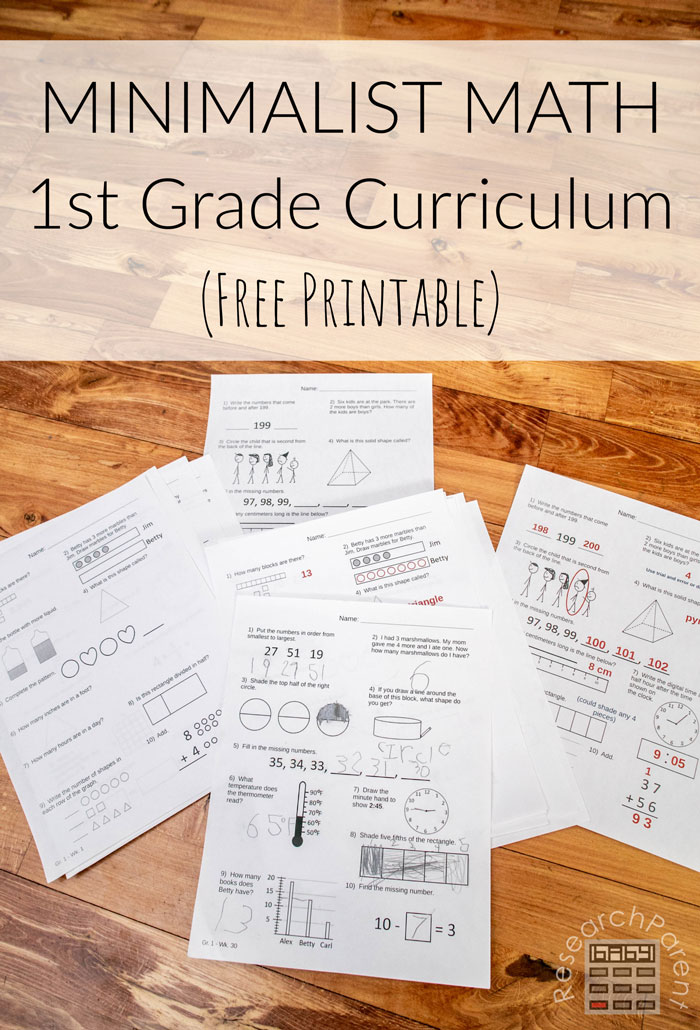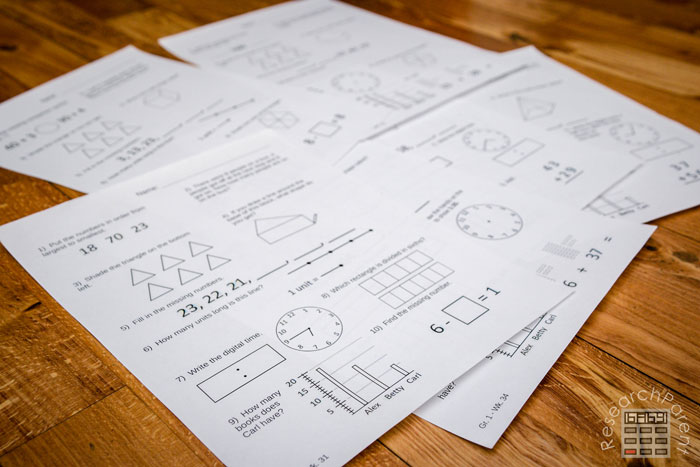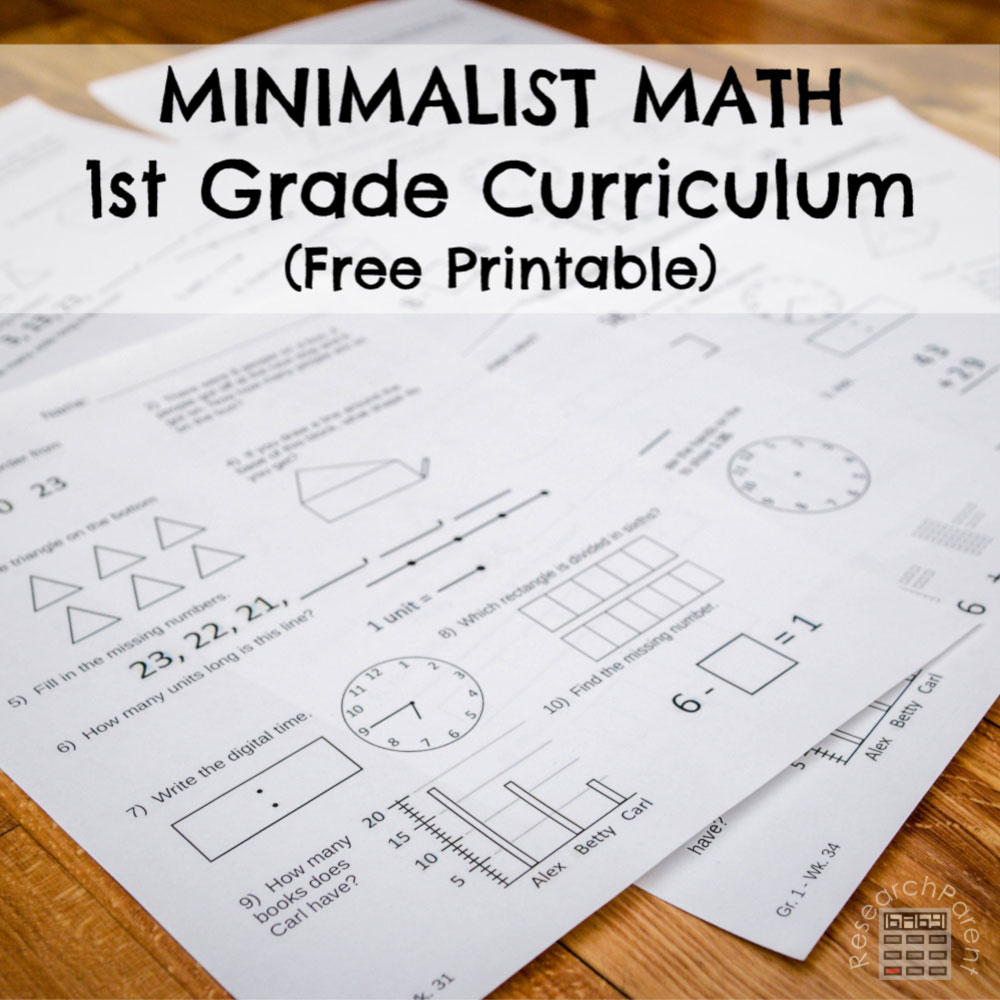First Grade Minimalist Math Curriculum
I created this curriculum because I want my own kids to have a positive attitude towards math. I feel like all the repetition that kids experience using a more traditional curriculum is unnecessary in the elementary years. If kids develop a distaste for math because they are overwhelmed by the amount of work they have to do, then it is actually counterproductive. This first grade minimalist math curriculum I created exposes kids to all the same types of problem with the same range of difficulty that they would find in a traditional curriculum, just without all the repetition.

You can learn more about my methodology and my reasons for creating this curriculum here. Basically, I have created 36 worksheets for my children to complete during the school year. Each worksheet consists of 10 different types of problems. As the year goes on, the problems progress in difficulty. Rather than doing math daily, my kids do one 10 problem worksheet each week.
Kids will likely need help completing this 10 problem worksheet. I recommend sitting next to them and taking the time to explain the concepts. My kids look forward to doing math with me, because they know they will have my full attention for those 20 minutes.
If kids can master these 360 problems during the year, I believe they will be as good at math as if they had done a full, traditional curriculum. So far, my kids all test at or above grade level in math despite spending much less time on the subject.

This first grade minimalist math curriculum covers the following 10 topics. Each week a child does one problem from each of these categories.
- Understanding Numbers
- Word Problems
- Spatial Sense
- Geometry
- Patterns & Sequences
- Units & Measurement
- Telling Time
- Fractions
- Graphs, Charts, and Tables
- Calculations
One weakness of this curriculum is that they will be slower at basic math operation such as addition and subtraction, because they are not practicing these memorization facts regularly. For my oldest, I just let him be a little slower and did not try to remedy the speed issue until he was in fourth grade. He might have been a little slower than other kids while testing, but since he understood the concepts of addition and subtraction I do not think it affected his accuracy.
However, if you are concerned about their fluency with basic math facts, you can check out some of my free addition and subtraction resources. My kids also like that games in Kate Snow’s Addition Facts that Stick. In addition to fun games for you and your child to play together, it also includes practice worksheets to help your kids master their basic addition facts. The game Clumsy Thief in the Candy Shop is another fun way to build fluency in counting to 20.
Whether you are planning to use this free set of worksheets as your full curriculum or just as a supplement to check for gaps, I hope it is helpful to you!
Recommended Age Range: First Grade
Time Required: about 20 minutes per week
Difficulty: starts off fairly easy and gets harder as weeks progress
Cost: Free printable
Materials
paper
Instructions
Print out the curriculum and help your child complete one worksheet each week for each of the 36 weeks of school.
Free Printable
Minimalist Math – First Grade Curriculum
Minimalist Math – First Grade Curriculum – Answer Key

Click here for all the Minimalist Math curricula available for different grade levels.
Related Links
Math Activities for Kids
Minimalist Math Curriculum Methodology
Learning Activities for Kids
The post First Grade Minimalist Math Curriculum appeared first on ResearchParent.com.

